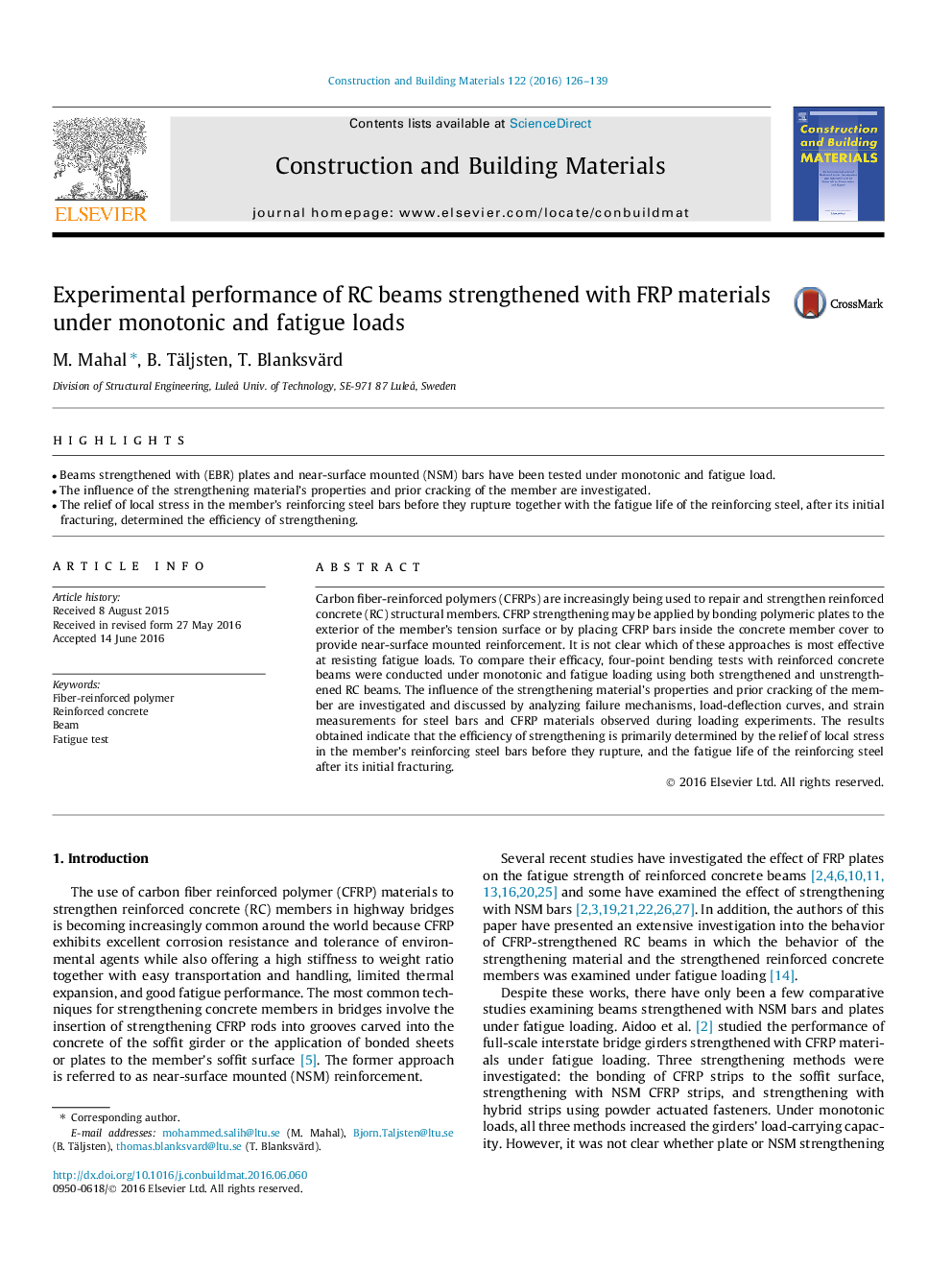| Article ID | Journal | Published Year | Pages | File Type |
|---|---|---|---|---|
| 6717927 | Construction and Building Materials | 2016 | 14 Pages |
Abstract
Carbon fiber-reinforced polymers (CFRPs) are increasingly being used to repair and strengthen reinforced concrete (RC) structural members. CFRP strengthening may be applied by bonding polymeric plates to the exterior of the member's tension surface or by placing CFRP bars inside the concrete member cover to provide near-surface mounted reinforcement. It is not clear which of these approaches is most effective at resisting fatigue loads. To compare their efficacy, four-point bending tests with reinforced concrete beams were conducted under monotonic and fatigue loading using both strengthened and unstrengthened RC beams. The influence of the strengthening material's properties and prior cracking of the member are investigated and discussed by analyzing failure mechanisms, load-deflection curves, and strain measurements for steel bars and CFRP materials observed during loading experiments. The results obtained indicate that the efficiency of strengthening is primarily determined by the relief of local stress in the member's reinforcing steel bars before they rupture, and the fatigue life of the reinforcing steel after its initial fracturing.
Related Topics
Physical Sciences and Engineering
Engineering
Civil and Structural Engineering
Authors
M. Mahal, B. Täljsten, T. Blanksvärd,
